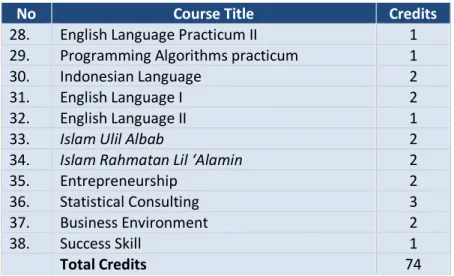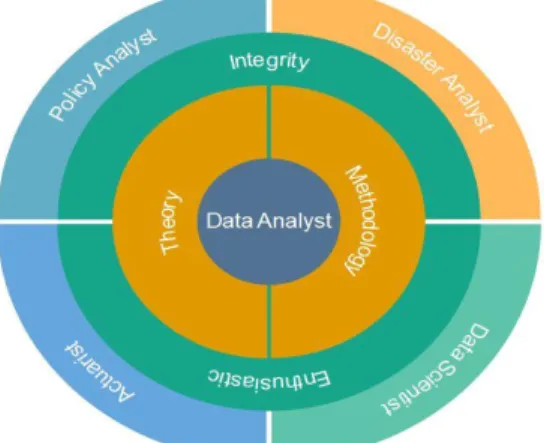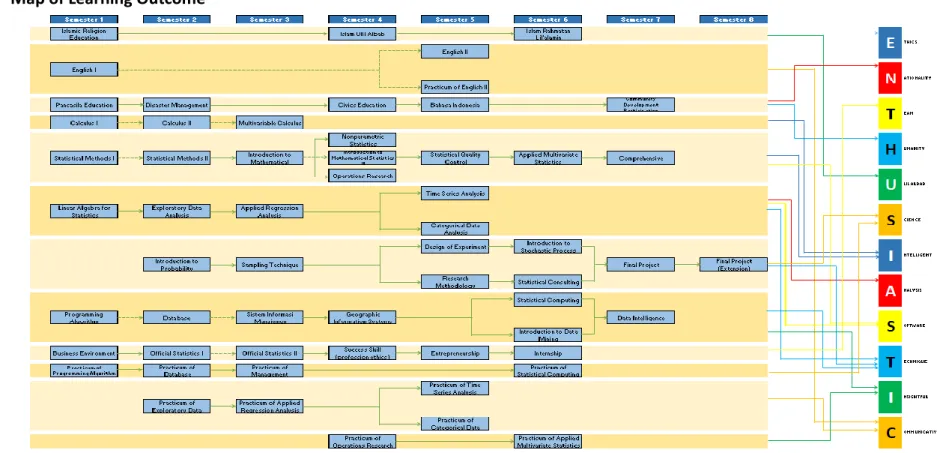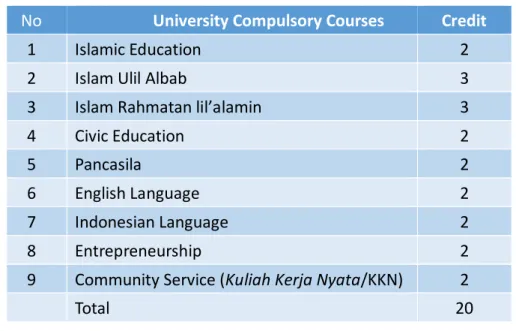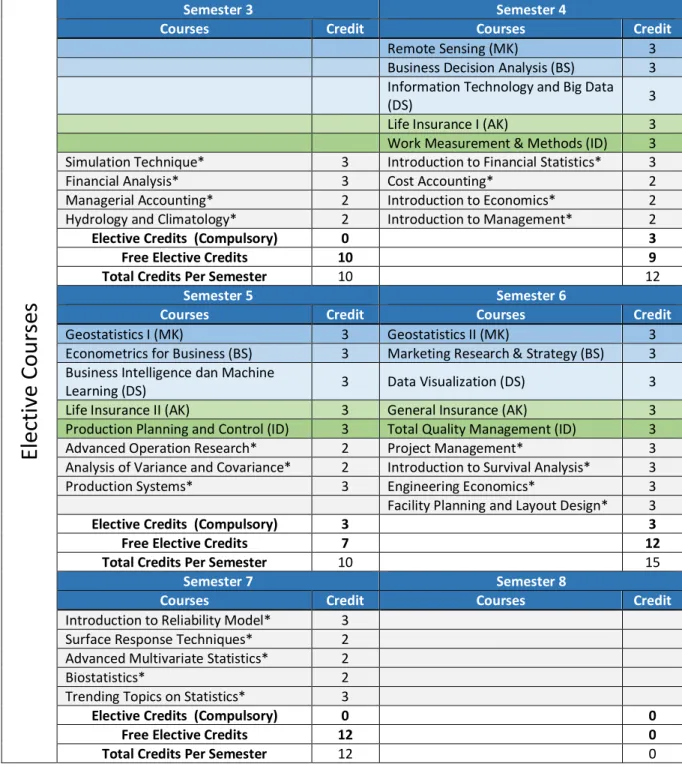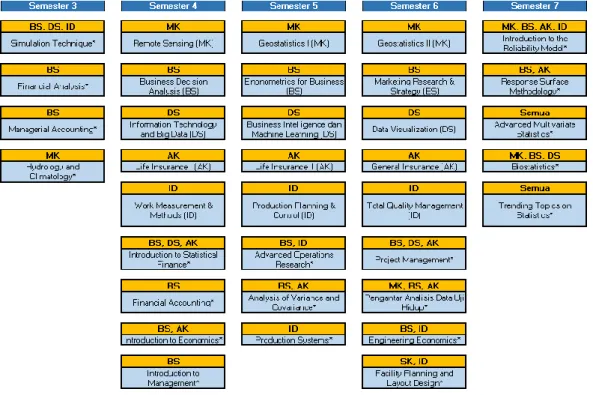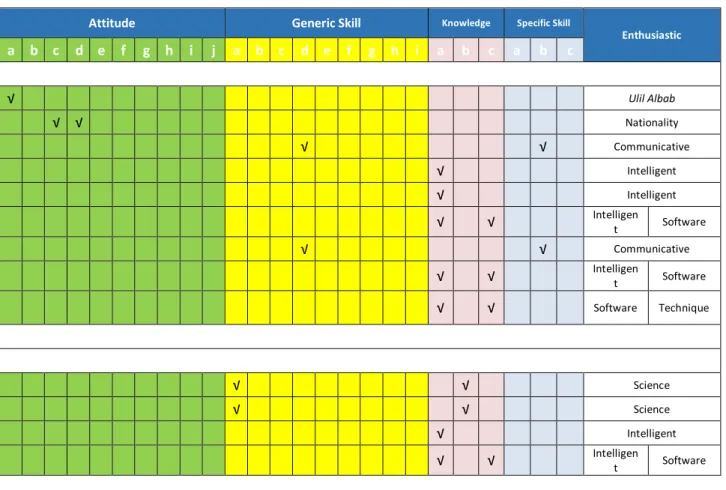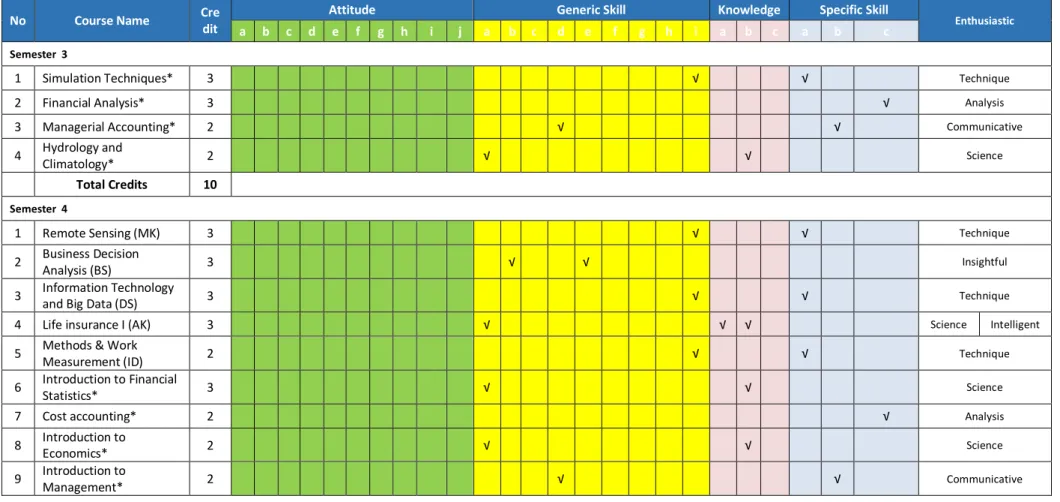The Faculty of Mathematics and Natural Sciences UNIVERSITAS ISLAM INDONESIA. in accordance with the rector's executive order no. 1102/SK-Rek/DA/X/2017 on the 2017 curriculum for the bachelor's degree in statistics. Alhamdulillahirabbil'alamin, Academic Guidebook for Statistics Study Program, Faculty of Mathematics and Natural Sciences UII has been published on time. This handbook serves as a guide for students during their studies on the Statistics Study Program at the Faculty of Mathematics and Natural Sciences, UII.
This academic guide is intended as a handbook for students during their study participation in Statistical Education at the Faculty of Mathematics and Natural Sciences UII, to plan, organize and complete their studies with good results. The faculty leaders congratulate you on joining the Faculty of Mathematics and Natural Sciences UII's Statistics Education, with the hope of being able to provide optimal service to all students in the Faculty of Mathematics and Natural Sciences UII environment. We also wish you the best of luck with your admission to the Department of Statistics, Faculty of Mathematics and Natural Sciences.
The 2018/2019 Academic Guide of the Statistics Study Program, Faculty of Mathematics and Natural Sciences, Universitas Islam Indonesia aims to provide explanations to new students about the visions, missions, educational systems and curricula of the Statistics Study Program, Faculty of Mathematics and Natural Sciences. At the same time, it is a source of information about organizational structures, academic rules, lectures, exams, final projects, graduations, the syllabus of compulsory and elective courses, which are very important during the educational process in the Statistics Study Program, Universitas. Islam Indonesia.
INTRODUCTION
- A BRIEF HISTORY OF UII AND STATISTICS STUDY PROGRAM
- VISION OF STATISTICS STUDY PROGRAM
- MISSIONS OF STATISTICS STUDY PROGRAM
- GOALS OF STATISTICS STUDY PROGRAM
- MEANING OF UII LOGO
- UII HYMNE
- LIST OF LECTURERS
- LABORATORY FACILITIES
- ORGANIZATIONAL STRUCTURES
Meanwhile, private companies where alumni work include Gojek, MNC TV, RCTI, Metro TV, Bank Danamon, Cipta TPI Inc., Garuda Indonesia Inc., Rajawali Citra Indonesia Inc., Detik.com, Emerio Corporation Inc., The Nielsen Inc., Vale Indonesia Tbk Inc., Gerbang Sarana Baja Inc., Teletama Arta Mandiri Inc., M Inc., Netherlands Maritime Institute of Technology, Eka Hospital Hospital and many more. Conducting and assisting qualitative research in the field of statistics for solving human problems (study). To produce quality scientific statistical work that is useful for the benefit of people.
UII will keep its name as one of the universities capable of producing researchers in line with its goals. Thus, the symbol in the middle represents the purpose of UII, which is based on Islamic teachings and Pancasila. Educational and teaching activities in the Statistics Study Program are supported by 20 permanent teaching staff, 1 study program staff and 1 laboratory assistant.
ACADEMIC RULES
- General Academic Rules
- Student Registration
- Student Leave
- Inactive
- Reinstatement
- Learning Evaluation
Complete the courses online according to the credits allowed and request a printout of the RAS form to the faculty operator after completion. Changes to RAS input, both in courses and classes, can only be made during the designated RAS revision period. Students taking Regular Community Service 1 may not take courses in the regular semester.
Students who take Graduation Assignment and Regular Community Service 1 at the same time are not allowed to take courses. Academic leave is only granted to students who have actively attended two semesters in the first year. The student can take the Academic Leave Permit signed by the Vice-Rector no later than two days after submitting the leave request.
The student can check the schedule for submitting applications for study leave in the study calendar. Students returning from academic leave must submit a request for reinstatement through the Directorate of Academic Services (Direktorat Layanan Akademik/DLA) and an original academic leave authorization signed by the Vice-Chancellor for Academic Development and Research.
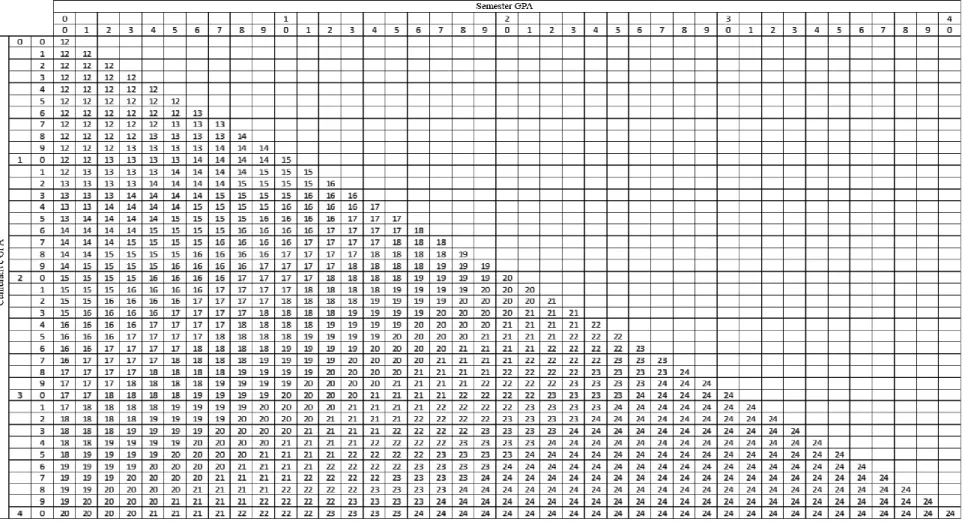
LECTURES, EXAMS, AND FINAL PROJECTS/THESIS
- Lectures
- Exams
- Internship
- Final Project and Thesis
The assignments that teachers give to students can take the form of reading reports, case evaluations, articles/news comments, papers, or other forms of activities conducted by teachers. Internship (Kerja Praktek/KP) is an observation and practice activity related to the application of statistics in a particular agency or industry, conducted by students of the statistics program who have fulfilled the requirements. Observation is a process by which students observe, study and understand the statistics acquired.
Meanwhile, practice is a process where students directly intervene to collect data, process and analyze data according to the problems and the statistical methods. Internship explanations in detail, including the requirements of the internship seminars, can be seen in the guidance on implementation and writing the internship report. Bachelor thesis (Tugas Akhir/TA) is a scientific work written by students at the end of their studies at the Statistics Study Program, Faculty of Mathematics and Natural Sciences, UII.
This research paper is one of the assignments or requirements that students must complete to obtain a Bachelor of Science (S.Stat.) degree in Statistics and is based on research conducted by students under the supervision of their supervisor. A detailed explanation of the final project can be found in the manual for the implementation and writing of the final project report.
STATISTICS STUDY PROGRAM CURRICULUM
QUALIFICATIONS AND GRADUATES PROFILE
LEARNING OUTCOMES
PP2 The students will be able to master at least two statistical software, including open source software. KU(f) To be able to maintain and develop networks with mentors, colleagues, peers inside and outside the institution. KU(g) To be responsible for the achievement of group work results and to supervise and evaluate the completion of work assigned to workers under their responsibility.
KU(h) The ability to carry out the self-evaluation process of the working group under own responsibility and the ability to independently manage the learning process. KU(a) The ability to use logical, critical, systematic and innovative thinking in the context of the development or implementation of science and technology, which pays attention to and includes humanistic values in accordance with their professional field. KK(c) Be able to analyze several alternative solutions available in the field of statistics to solve problems and provide analytical conclusions for appropriate decision-making.
KU(i) To be able to document, store, secure and restore data to ensure validity and prevent plagiarism. KU(s) To be able to make appropriate decisions in relation to solving the problem in their field of study, based on the results of information and data analysis.
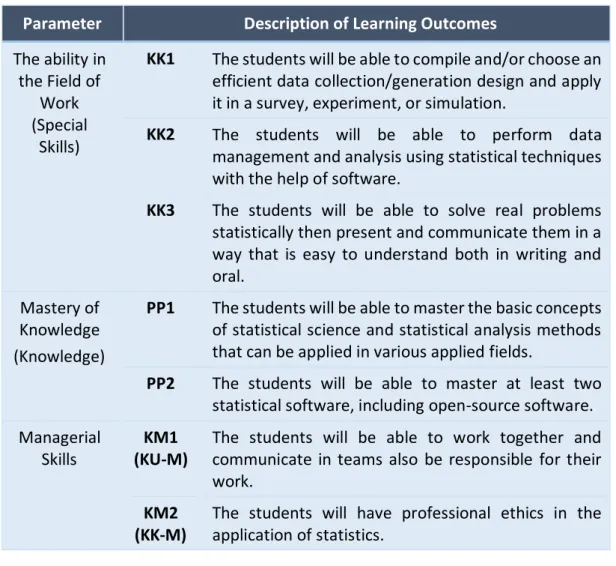
MAP OF LEARNING OUTCOMES AND COURSES IN STATISTICS STUDY
- Map of Learning Outcome
- Compulsory Courses
- Relationship between Learning Outcomes and Courses
- Distribution of Subjects Per Semester and Prerequisites
This course explores the concept of matrices, systems of linear equations and vectors and their solutions. This course examines the concepts of probability theory and statistics and methods of statistical analysis. This course examines the concept of exploratory data analysis and techniques in its investigation; and its calculations using SPSS and R software.
This course studies the concept of exploratory data analysis and techniques in his research, and its calculations using SPSS and R software. This course studies the concept of designing, organizing and collecting data, programming and documenting programs. This course studies the concepts and theories of opportunity as well as elementary statistical methods.
This course studies the concept of problem solving in regression analysis using SPSS and R software. This course studies the concept of queuing theory and building queuing model programs using MATLAB software. This course studies the concepts of financial analysis, financial reports, investment analysis and investment risk management.
This course examines the concepts of probability theory and statistics, mastery of estimation problems, and hypothesis testing. This course examines the concept of experimentation using one-factor and two-factor experimental methods. This course examines the concept of spatial data, spatial correlation, spatial interpolation, spatial classification, and the spatial autoregressive (SAR) model.
This course studies the basic concepts of risk modeling and fundamental problems of general insurance. This course studies the concept of experimental design, data collection and documentation of experimental design using methods in engineering economics. This course studies the concept of experimental design, data collection, and documentation of experimental design in relation to facility layout planning.
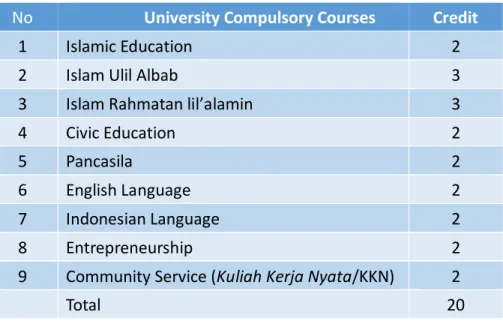
GRADUATION
REQUIREMENTS OF JUDICIUM ON FINAL COURSE
This course explores the concept of sets, real numbers, mathematical logic, permutations and combinations, functions, limits and derivatives. This course examines the concepts of probability theory and statistics, methods of statistical analysis using R software and Microsoft Excel for descriptive statistics. This course examines the concepts and theories of mathematics and calculus and explains the flow of analysis.
This course studies the concepts of probability theory and statistics, statistical analysis methods using R software and Microsoft Excel for inferential statistics. This course studies the concept of modeling and explaining official statistical methods and breaks down the problems of governmental affairs by modeling official statistics. This course studies the basic concepts of sampling techniques, sampling methods, simple sampling, sampling error, stratification sampling, systematic sampling.
This course examines the concepts and theories of hydrology and climatology and solves problems using statistical techniques. This course examines the basic concepts of non-parametric statistics, non-parametric tests, goodness-of-fit tests, correlation analysis and regression. The course examines the concept of opportunities in life insurance and the mastery of several statistical methodologies (methods and models) in solving problems in the field of life insurance.
This course studies the concept of possibility in life insurance and the mastery of several statistical methods (methods and models) to solve life insurance problems. This course studies the concepts of game theory, queuing theory and obtaining optimal solutions using statistical techniques. This course studies the concept of methods in applied multivariate statistics and can solve statistical problems and data analysis using applied multivariate statistics.
This course studies the concepts of probability theory, statistics and the mastery of some statistical methodologies (methods and models) for solving problems in several fields. This course studies the concept of studying research and marketing strategies in relation to statistical problems and their solutions using statistical methods. This course studies the concepts, techniques and evaluation of organization project management, planning and scheduling.
This course studies the concept of experimental design, data collection, and documentation of experimental design using response surface techniques.
